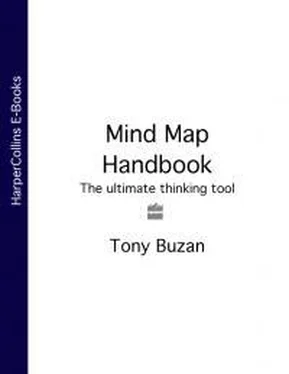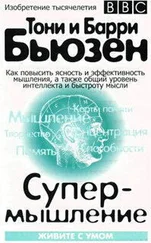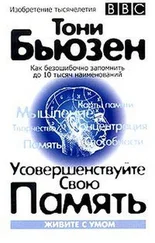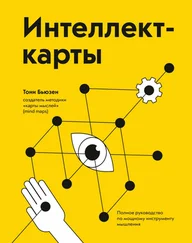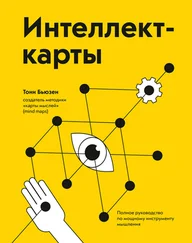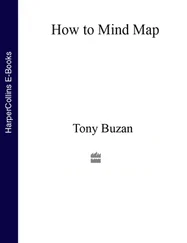Case History – Charles Darwin
Darwin was a Mind Mapper! In developing his Theory of Evolution, Charles Darwin had a vast task in front of him: he had to explore as much of the natural world as possible; to classify each of the species and their relationships to each other; to explain the regularities and ‘irregularities’ in nature; to demonstrate the explosive and multiplicative nature of growth and diversity. How did he do this? With basic Mind Maps!
Darwin devised a basic Mind Map form of note, which was very much like a branching tree, and was almost identical to the ‘FUN’ exercise you did here. Darwin used these basic Mind Map forms as the only effective way to help him collect masses of data, to organize it, to see the relationships between the various items, and to create new awarenesses from it. It is reported that within 15 months of drawing his first tree ‘Mind Map’ diagram, Darwin had worked out all the major components of the Theory of Evolution.
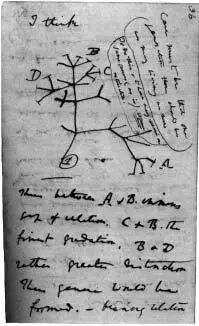
Darwin’s note-taking method
Armed with all your new Mind Map Creative Thinking knowledge, you are now ready for a Creativity Workout.
Creativity Workout
1. Use Colour in your Notes
Always use colour in your notes. Start off with a four-colour ballpoint pen, and move on to other colours as you progress. Colour makes your notes more interesting; it will stimulate your Creative Thinking processes, and will, literally, add colour to your life!
2. Daydream and Nightdream!
Both daydreaming and nightdreaming give your visual Creative Muscles added strength. Note, preferably in Mind Map form, any ideas or images from your best dreams. This will encourage you to be more visual and colourful in your Mind Mapping notes.
3. Think Radiantly
Once a week, take any word or concept that interests you, and do a ‘FUN’ game Radiant Thinking basic Mind Map burst. This will keep your Mind Mapping skills in shape.
4. Mind Map
Draw a Mind Map whenever you have a creative problem you wish to explore. Do it in the following stages:
Do a quick Mind Map brainstorm, in just the same way in which you did the ‘FUN’ game brainstorm – adding colour, images and as much information as your brain wishes (see here). This exercise should be done at high speed.
Let your brain ‘think on it’ for a while, giving yourself at least an hour’s break.
Return to the Mind Map and add any new thoughts you have had.
Look at your Mind Map closely again, finding any new connections you can between any of the elements on any of the branches.
Connect these elements by codes, colours or arrows.
Identify the main new connections.
Take another break to allow your brain to think on it again.
Look at your Mind Map once more, and identify and mark any new connections you can now see.
Return to the Mind Map and decide on your solution!
5. Keep Mind Map Notebooks
Another great creative genius who made visual Mind Map-type notes was Thomas Edison, and he did so because Leonardo da Vinci had!
Edison, who filed patent after patent after patent with the US authorities, was driven by a burning creative desire, and decided that the best way to fuel his own creative genius would be to follow in the footsteps of his hero Leonardo.
Following Leonardo’s example, Edison studiously and passionately recorded, with visual illustrations, every step of his Creative Thinking processes, and eventually amassed 3,500 notebooks.
6. Use Mind Maps as a Creative Communication Tool
If you have to make a speech or talk of any sort, use a Creative Mind Map to help guarantee a successful presentation of your ideas.
Regardless of whether your speech is a short thank-you speech after a dinner or celebration, or a full-blown formal business presentation, a Creative Mind Map has a number of advantages over the standard and normal linear, boring, monotonous, pre-prepared, often humourless presentations that make many people afraid to speak in public, and audiences to dread such events too!
By using a Mind Map you can free your mind (and yourself) to organize your thoughts quickly, put them in an appropriate order, and include all the key ideas and images that will spark your imagination when you get up to speak. This will help you to relax and talk naturally and spontaneously – to the relief and enjoyment of everyone concerned!
7. Mind Map and Create Your Future
For this exercise, place an image or symbol of yourself in the centre of your Mind Map and have as your main branches such topics as Skills; Education; Travel; Family; Job; Wealth; Health; Friends; Goals; Hobbies, etc. On this Mind Map create your ideal future – Mind Mapping the rest of your life as you would design it if a genie from the magic lamp had granted your every wish. When you have created this ideal future Mind Map, set about making it come true, with the help of your Mastermind Group (see here). Many people have tried this ‘create your own life’ Mind Map approach and have found it to be extraordinarily successful. Within a few years of creating their Mind Maps they have found that as much as 80 per cent of their plans have been accomplished!
8. Make an Image-only Mind Map
Make a Mind Map using only images – no words at all! Your brain will make different connections and associations when it is dealing only with images. You may be quite surprised at the new creative links and connections you make when you explore a topic in this way. (Try this exercise especially after you have read through Chapter 3.4, and have released the creative artist in you!)
9. Colour-code Your Mind Maps
Find four ways to use colour as a code in your Mind Maps. Build up ways that you can use colour and/or texture to show connections, layers of time or thought, people, actions, urgency, etc.
10. Explore How Using Mind Maps Can Help You in Your Life
Mind Map all the ways Mind Maps can assist you – at home, at work, in all areas of your life. Keep building and extending this Mind Map. Add others’ ideas on to yours as well!
The ideas in this chapter are summarized in Plate 19.
3.4
You The Creative Artist
Everyone (and that means everyone ) is an artist by natural birthright.
Why is it, then, that over 95 per cent of people around the world believe that they are not truly creative or artistic, and that artists possess some special magical gift bestowed upon only a chosen few?
I have done surveys on this phenomenon across the world, with some surprising results. First, regardless of the nationality, race, age or sex of those people surveyed, the results were the same. Secondly, the answers given to the most important questions were always logical, and always wrong!
The most revealing question to ask those 95 per cent-plus who feel that they are not blessed with the gift of being able to draw and paint, is ‘How do you know that you don’t have this special ability?’
The usual answer, as you might suspect, is that they have tried, failed, and therefore proved to themselves that this ability was not part of their set of mental skills.
What they had in fact ‘proved’ was that their first attempt at art had not produced the desired results, and not only that they needed to try again, but that they needed to be taught how to make that second attempt.
What happened in nearly every case was almost identical. No doubt you can put yourself into the story, as follows:
Читать дальше
